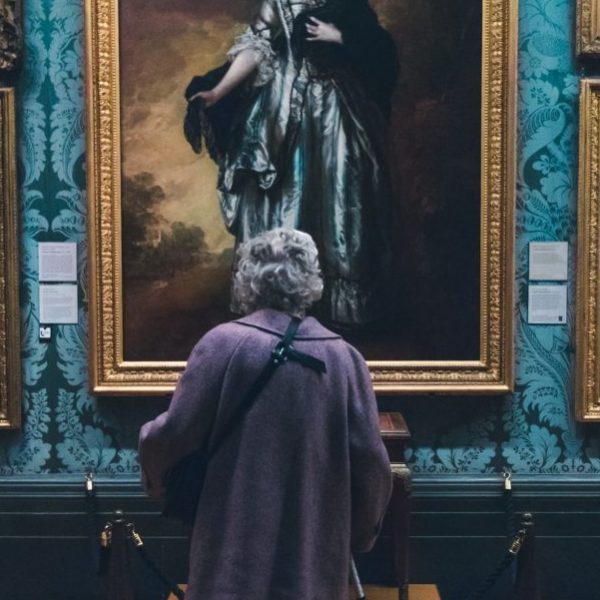Reminiscences of a Collector
Like many Yale students this summer, the Pearlman Collection is traveling abroad. Earlier this month, the exhibition Cézanne and the Modern: Masterpieces of European Art from the Pearlman Collection moved into the Musée Granet in Aix-en-Provence, France—the second stop of its international tour. The exhibition features fifty Impressionist and Post-Impressionist works, including a magnificent set of Cézanne watercolors, all brought together by American collector Henry Pearlman (1895–1974).
The accompanying exhibition catalogue opens with an essay by Pearlman called “Reminiscences of a Collector.” From it, we gain unusual insight into the man behind the collection and the unique paths that some paintings took to his collection.

Paul Cézanne (French, 1839–1906), Trees and Cistern in the Park of Château Noir, 1900–1902. Watercolor and graphite on pale buff wove paper, 47.87 x 31.4 cm. The Henry and Rose Pearlman Foundation, on long-term loan to the Princeton University Art Museum
Pearlman’s story has a distinctly American feel. He was the son of immigrant parents and a self-made man who, with only a high school education, founded his own company in 1919. He went on to build one of the most distinguished private collections of modern art in the United States.
His art collecting began in earnest when he purchased a landscape by Chaïm Soutine called View of Céret in 1945. Pearlman spotted the painting while passing the American Art Auction Galleries; when it went up for sale, he made sure he was the highest bidder. The purchase, for Pearlman, was a success: “When I came home in the evenings and saw it I would get a lift, similar to the experience of listening to a symphony orchestration of a piece well known and liked.”

Chaïm Soutine (Russian, active in France, 1893–1943), View of Céret, ca. 1921–22. Oil on canvas, 74 x 85.7 cm. The Henry and Rose Pearlman Foundation, on long-term loan to the Princeton University Art Museum
After the Soutine piece, his collection grew steadily. Pearlman was practical, approaching deals with sharp business acumen and an overwhelming concern for authenticity, but he was not always patient: “If I wanted a painting, I simply had to have it, and quickly.” And because he tended to buy pieces from smaller dealers and private sources, many of the pieces that he acquired he stumbled upon, rather than actively sought out. “Luck—being at the right place at the right time,” he admitted, “played a big part in the development of my collection.”

Vincent van Gogh (Dutch, 1853–1890), Tarascon Stagecoach, 1888. Oil on canvas, 71.4 x 92.5 cm. The Henry and Rose Pearlman Foundation, on long-term loan to the Princeton University Art Museum
These two aspects of Pearlman’s collecting style—impulsiveness and luck—feature prominently in the story of how Pearlman wound up with Tarascon Stagecoach by Vincent van Gogh. At the time, the painting was known only from Van Gogh’s description and sketch of it in a letter to his brother Theo. Many considered the work to be lost, or referred to it simply as an “unknown painting.” Yet Pearlman found himself standing in front of it in the summer of 1950. As he recounted:
“Some years ago, I met a South American dealer who specialized in early eighteenth-century paintings and objects d’art. I invited him down to see some of my early genre paintings, which I proposed to exchange with him should he run across any modern works that might interest me. Sometime later he asked me to look at a Pissarro landscape. After I decided against it, he asked whether I could afford an expensive painting: receiving an affirmative answer, he brought out Tarascon Diligence by Van Gogh. Within an hour and a half, I had concluded a deal with him.”
Pearlman paid the dealer in cash and with seven pieces from his own collection. One of these seven pieces was a painting by Soutine that he immediately regretted selling and, “after passing a sleepless night,” he repurchased it the next morning from the gallery. And so Pearlman walked away with a once-obscure Van Gogh painting and one of his favorite Soutine pieces in tow. His discovery of Tarascon Stagecoach might be astonishing, but the chance and spontaneity of the deal are all too characteristic of how Pearlman built his impressive collection.
Elizabeth Malchione is a summer intern in Yale University Press’s Art Workshop and a rising senior at Yale studying history.


























